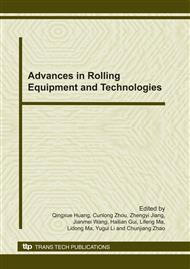p.332
p.340
p.347
p.353
p.361
p.365
p.371
p.380
p.386
Shear Stress and Deformation Analysis of Static Bonded Multi-Layer of Pyrex7740 Glass and Aluminum
Abstract:
In this paper the technological experiments of static bonding has been carried out in the bonding of multi-layer Pyrex7740 Glass and Al. The joining mechanism is analyzed with SEM and EDX. It’s observed that bonding region across the interface consists of the metal layer, oxide transitional layer and the glass layer. The bonding process can mainly be categorized into anodic process and solid state diffusing process. The pile-up of the ions and its drift in the interface area are the main reasons for anode oxidation and joining successfully. The analysis of the shear stress and deformation in the static bonded samples was made by MARC. Modeling studies showed the maximum shear stress of bonded samples all occur in the transition layer. It also shows the shear stress and deformation in the three-layer samples is significantly smaller than that in the two-layer samples. This has an important advantage in MEMS fabrication.
Info:
Periodical:
Pages:
361-364
Citation:
Online since:
October 2010
Authors:
Keywords:
Price:
Сopyright:
© 2011 Trans Tech Publications Ltd. All Rights Reserved
Share:
Citation:


